We had finally decided to make this 4x4 trip to cross over into Bolivia despite misgivings about the quality of companies offering it. The first day got off to a reasonable start when, despite our fears, a minibus turned up at our hostel to take us via Chilean customs to the border. Chile, of course, managed to maintain its poor quality of customs and immigration services. We won't go into all the grisly details but suffice it to say that there was only one window open, despite the fact that great lines of minibuses were all trying to get through at the same time (not to mention the public buses, lorries and a fair few private cars). The Chilean officials kept getting angry because the queue was spilling into the road but didn't think to open another window until we had been there for over an hour.
Luckily we did still have the crumpled scrap of paper we had been given when we entered Chile and finally got the necessary exit stamp. We then headed uphill (literally) to the crossover point and the Bolivian customs, which were far simpler. A quick fill in of the form, a friendly welcome (and a congratulations because we had both filled it in correctly) and we were straight out of the office with a 30 day visa. We had gathered from friends who have made this trip that the 4x4s run in groups but we hadn’t taken in how many there would be.
About 15 Toyota Landcruisers were grouped in clusters and we were given some breakfast as the drivers finalised stuff and eventually packed our main bags on the roofs. We found ourselves with two other couples, Heather and Matt from Chelmsford and Rubén and Maria-Helene from Buenas Aires; our driver was called Figo. What struck us most at this stage was that it was cold! However, we had been prepared for this and soon found ourselves pulling out the hoodies and fleeces from our bag.
We got going over the rough unsurfaced roads towards a series of coloured lagoons, which take their colours from the minerals in the rock and water.
Our first stop was the White Lagoon, which did look a bit white, more so from further away. However, when we stopped by the shore to take a walk, we found ourselves excitedly looking up into the sky where the sun was surrounded by a circular halo of light.
Jen had seen a picture of this relatively rare phenomenom (caused by sunlight refracting through ice crystals in the clouds) in her cloud-spotting book (don’t ask!) a couple of days ago but never expected to see one so soon! The lagoon also gave us our first sighting of flamingos who were very good at standing but less inclined to take off to give us good flying pictures. We ascended further to 5000 metres to see the Green Lagoon,
which logically was green although again the impression of the colour is better from further away. We had been told that there was no life in this lagoon because the water contains a lot of arsenic, however, obviously nobody had told the flamingos wading in the water. On the way we saw ranges of mountains that were also streaked with colours from the same minerals that coloured the lagoons.
Our next stop was the so-called Salvador Dalí Desert. It is certainly true that these strange rock formations standing around in a plain of sand do bear a resemblance to the landscapes in paintings such as 'The Persistance Of Memory’ (the one with the melting clockfaces).
We then drove on further to Termas De Polques some thermal springs where we took the plunge and changed into bathers.
In fact the water was a really nice temperature (30 C) although not very deep. We sat for a while on the sandy bottom up to our necks in warm water but when we stood up it was clear that it was still pretty cold! Having got dressed again in our various layers (the sun was warm but there was a lot of wind), we ascended further to a series of geysers called Sol De Mañana (Morning Sun – no, we don’t know why)
that announced themselves with a very strong smell of sulphur. Tony managed to persuade Jenny that it would be safe if we stayed on the dry bits between the craters and we walked about amongst the gurgling steam and we were very impressed. Looking down into these pools of bubbling and boiling mud, listening to the blasts of escaping steam and the strong sulphur smell was really a bit like a view into a Bosch-like mythical hell.
At this stage we were still at 5000 metres and, despite a little light-headedness we were feeling no real ill effects from the altitude.
Our final lagoon was Laguna Colorada (The Red Lagoon) where we saw more flamingos. We were told that there are three different species that live in this area and we saw all three, but there doesn’t appear to be a prize. This also prompted much dicussion about the claim that the flamingos become pink because they eat red algae/pink shrimps etc. if anyone has an answer we'd love to hear).
While walking around the lagoon we chanced upon a skull, complete with an articulated jaw bone, which Jenny was keen to bring with us on the rest of our journey but was persuaded to leave it. We also saw llamas (probably where the skull came from) to add to the vicuñas that we had seen earlier. The amount of vegetation in these areas is absolutely minimal, it’s a wonder that anything is able to survive.
The Red Lagoon was close to our Refugio, the very basic accommodation we had for the first night. Although just an austere concrete block, it appeared at first to be better than we had feared. Although we were to be housed in dormitories (one car-full to a room) the beds were solid (made of concrete) with substantial matresses and good sheets and blankets. We had been told that we might suffer because we did not have sleeping bags but this was not at all the case. The very basic toilets, however, were far less heartening and our worst fears were realised when the floor began to flood after an hour or so. Although we had come down from our highest point, we were still now at 4800 metres and lots of us were beginning to feel headachy and tired, almost certainly due to our fairly rapid ascent. We sampled some tea made from coca leaves (the source of cocaine) which the native peoples say stops altitude symptoms but it had no discernable effect. However, the evening meal was still a jolly affair although we were all wearing a lot of clothes. The temperature here drops very rapidly once the sun has set, there was no heating (this is summer of course) and the door to the refuge was frequently left open by the staff who were constantly running between the few buidings in this deserted spot. After we had eaten, we found a number of llamas feasting on the scraps that had been left out by the staff behind the building.
During the night the altitude symptoms got worse for many of us. Although nobody had been cold, few felt that they had slept well. We were woken by Rubén’s alarm at the scheduled 6.30am rising time but luckily Tony soon realised this was still on Chilean time so it was actually 5.30am instead! It was therefore a very subdued group who gathered to pick at the breakfast that was provided while the cars were reloaded for the day’s expeditions. The symptoms, including headaches and stomach upsets would last most of the day, only beginning to be relieved much later as we descended to just below 4000 metres.
We headed across a wide desert fringed with with more multicoloured mountains towards the Stone Tree. This is one of a number of very large rocks whose form has been contorted by the action of water and wind. We clambered around for a bit and took the obligatory photos. After this we were taking rougher and rougher roads, often winding down high banked dry rocky watercourses.
In one of these we chanced upon a vizcacha, a small creature looking a bit like a long-nosed rabbit from the front but with a tail more like a cat. It is actually a rodent related to the chinchilla.
Our next stop was a lagoon which for some reason is not named after a colour. Luguna Honda (Deep Lagoon – not named after the motorbikes) seemed to be several colours in different places. Perhaps that’s why they ducked out when naming it - it didn’t actually seem any deeper than the previous lagoons. It was here that we visited an eco-lodge and took our lunch. We were not clear what made this an eco-lodge other than the splendidly clean eco-toilets, which Jenny made great use of (thereby using up our stash of Chilean pesos coins). We perigrinated around the shoreline taking more photos of flamingos who were still reluctant to take flight.
We set off again and soon we were treated to the sight of a desert fox trotting along close by. Like the rabbity thing earlier, he did not seem unduly phased by a car-load of people, perhaps their experience is that no harm comes from these things.
Our next stop was a viewing point which allowed us to look across to Volcán Ollagüe, an active volcano that always has smoke rising from its summit. Although quite a long way away, few of us could remember having been near an active volcano before so we were all impressed.
More driving through desert areas led us towards our first sight of salt flats. These are located at Chiguaya and gave us a taste of what was to come the next day when we go the salt flats at Uyuni. It was remarkable sight and seemed very extensive as we drove across the slushy white surface. Tony had to wake Jenny up to look at the view, reminding her that we had come all this way to see salt plains. Jenny was not moved 'I don’t feel well’ she said.
We stopped for while in a small village called San Juan where we attempted to see the only tourist attraction, the cemetary but didn’t think we could make it in our 20 minute stop. We were therefore a bit pissed off that the stop dragged out, in typical South American style, to an hour. We finally made our way to the ‘hotel’ for the night, which was considerably below our expecations. We had been told that the first night would be very basic but the second would be a proper hotel. It wasn’t.
Although we had separate but very basic rooms, electricity only ran for a short while, we had to pay extra to use the rudimentary shower and the toilet block was already flooded when we arrived. We know that the local people live in poor conditions and we have no real problem sharing those privations when necessary but we really objected to being hoodwinked. Our room had the peculiarity that we had no switch for our light so had an enforced curfew. However, since everyone felt shattered no-one really objected.
The next morning everyone was feeling better. Partly this was due to having come down to around 4200 metres and partly because we were finally aclimatising a bit. Breakfast was positively chirpy as most of us felt a cloud lifted from our heads. A different cloud soon descended, however, when we realised that Figo was going to bring his wife with him, adding an extra passenger to a full car. When she blithely seated herself in the front seat, tempers began to rise and soon Maria-Helene ordered Figo to stop and laid the law down. There was a heated exchange and it was clear that Figo was being deceptive; he had told us about his wife as we were getting into the car but claimed that he had asked us, he also claimed that Heather had said it was OK when she had not. We were resolute and glumly Figo set off again without any of us being clear what was happening. When we reached a small bus stopping place on the edge of the Uyuni salt flats he dropped his wife off and carried onto the flats with the front seat empty! We asked him to stop and we re-arranged ourselves. We felt guilty about it but felt he had brought it upon himself because we might well have agreed if he had asked sensibly the previous day instead of just springing it on us.
Putting all that behind us, we were determined to enjoy this day, the culmination of our journey. The salt flats at Uyuni are the largest in the world and cover 12,000 square kilometres. The salt was laid down when a huge area of water (Lake Minchín) covering most of what is now south west Bolivia was separated from the sea when the Andes rose up. The climate changes meant that the water was evaporated over a long period and now the salt lies up to 500 metres deep. As we headed out into the pure white flat land, we were totally blown away by the vastness of what we could see. The shimmering white surface, crazed with polygons where it has dried out, seemed to stretch out forever, punctuated in the distance by ‘islands’ that appeared to float above the surface, rather like some of those old Yes album covers.
We made our way towards Isla Incahuasi, the tip of an extinct volcano which is now covered with cordon cactus and surrounded by salt. The views from the top were spectacular, at times looking like water washing up on a shoreline (which of course in much earlier times it was). We also got a chance to clamber around inside the chimneys of the volcano.
On this island we were able to look at a map of the entire salt plain and realised we had actually only crossed a small corner of the whole vast area.
From the island we set off further into the salt pans and the surface began to change. During the wet season (now) water accumulates on the surface of the plains and we were now aquaplaning across salt water, the salt at times 50 centimetres below the water surface. Spectacular sprays were coming up behind us and all around the clouds and mountains were reflecting in the surface.
We fetched up at the Salt Hotel, which is a bit controversial in that it was built illegally (and later two more went up). Recent action has been taken to dismantle the later two and rebuild them just off the salt plain proper. The original one has now been converted into a museum of sorts (although the beds appeared to have been recently slept in). Inside you can see some salt statues and marvel that the whole building, including the beds and other furniture, is constructed from salt.
The main system is to cut blocks of salt, in which you can see the strata as the layers have been laid down over time. These are then stuck together with more salt as a mortar. Furniture is made by cutting appropriately shaped blocks. The texture is really like stone although it doesn’t do to spill your drink on the table too often!
From here we travelled further through the wet to the edge of the salt plain proper and the village of Colchani. Here we could see the salt making process in action. A man goes into the salt plain and digs a pile of salt so that it sticks up above the water level. This then dries a bit and other men with a lorry take away the drier stuff and put it in piles on ‘dry land’.
When the piles are big enough and dry enough, more men shovel it into bigger lorries and it is taken away to be refined. Easy really, you just need lots of men and shovels. Eventually the salt will run out but we think their jobs are safe for now.
In the village we could see different styles of house construction using salt although to be fair more buildings appeared to be falling to bits than being built. Apart from the salt ’factory’ this village appears to subsist on the meagre pickings from the gangs of jeeps that turn up each day. Once lunchtime is over, the stalls are packed up and everyone goes home. We too packed up and made the relatively short journey, now on partially made road, to the town of Uyuni, where we said our farewells before wandering off to find our hotel (and hopefully getting into a comfortable bed).
Mountains, lakes, salt plains & altitude sickness
Monday, February 08, 2010
 Uyuni, Bolivia
Uyuni, Bolivia
Other Entries
-
64Out of Iguazu with a bang; on to Ciudad del Este
Dec 1654 days prior Ciudad del Este, Paraguayphoto_camera10videocam 0comment 1
Ciudad del Este, Paraguayphoto_camera10videocam 0comment 1 -
65Encarnación - and we manage to see Jesús!
Dec 1852 days prior Encarnación, Paraguayphoto_camera55videocam 0comment 2
Encarnación, Paraguayphoto_camera55videocam 0comment 2 -
66Asunción; we're travellers, get us out of here!
Dec 2050 days prior Asuncion, Paraguayphoto_camera11videocam 0comment 2
Asuncion, Paraguayphoto_camera11videocam 0comment 2 -
67Xmas greetings!
Dec 2149 days prior Resistencia, Argentinaphoto_camera1videocam 0comment 7
Resistencia, Argentinaphoto_camera1videocam 0comment 7 -
68Resistencia: city of sculpture
Dec 2248 days prior Resistencia, Argentinaphoto_camera41videocam 0comment 0
Resistencia, Argentinaphoto_camera41videocam 0comment 0 -
69Our 'current' location
Dec 2347 days prior Corrientes, Argentinaphoto_camera24videocam 0comment 1
Corrientes, Argentinaphoto_camera24videocam 0comment 1 -
70Salta: our first sight of the Andes and our Xmas!
Dec 2545 days prior Salta, Argentinaphoto_camera35videocam 3comment 3
Salta, Argentinaphoto_camera35videocam 3comment 3 -
71Multicoloured mountains and angels with guns!
Dec 2743 days prior Humahuaca, Argentinaphoto_camera53videocam 0comment 1
Humahuaca, Argentinaphoto_camera53videocam 0comment 1 -
72Following the Train To The Clouds
Dec 2941 days prior San Antonio de los Cobres, Argentinaphoto_camera81videocam 0comment 0
San Antonio de los Cobres, Argentinaphoto_camera81videocam 0comment 0 -
73Cafayate; days of wine, icecream and waterways
Jan 0237 days prior Cafayate, Argentinaphoto_camera42videocam 0comment 3
Cafayate, Argentinaphoto_camera42videocam 0comment 3 -
74Tucumán; chilling out and getting heated!
Jan 0534 days prior San Miguel de Tucumán, Argentinaphoto_camera26videocam 0comment 1
San Miguel de Tucumán, Argentinaphoto_camera26videocam 0comment 1 -
75Like Birmingham but better!
Jan 1029 days prior Córdoba, Argentinaphoto_camera64videocam 0comment 2
Córdoba, Argentinaphoto_camera64videocam 0comment 2 -
76Wines, Bikes, Barnsley and Bernard O'Higgins
Jan 1623 days prior Mendoza, Argentinaphoto_camera45videocam 1comment 1
Mendoza, Argentinaphoto_camera45videocam 1comment 1 -
77Over the Andes to Santiago
Jan 2316 days prior Santiago, Chilephoto_camera95videocam 0comment 8
Santiago, Chilephoto_camera95videocam 0comment 8 -
78Carnival Time in Paradise Valley!
Jan 2712 days prior Valparaíso, Chilephoto_camera89videocam 0comment 6
Valparaíso, Chilephoto_camera89videocam 0comment 6 -
79City of churches, craft stalls and penguins!
Jan 318 days prior La Serena, Chilephoto_camera55videocam 1comment 1
La Serena, Chilephoto_camera55videocam 1comment 1 -
80More Marys than you can shake a skull stick at.
Feb 062 days prior San Pedro de Atacama, Chilephoto_camera91videocam 3comment 1
San Pedro de Atacama, Chilephoto_camera91videocam 3comment 1 -
81Mountains, lakes, salt plains & altitude sickness
Feb 08 Uyuni, Boliviaphoto_camera82videocam 1comment 5
Uyuni, Boliviaphoto_camera82videocam 1comment 5 -
82Dead people, dead trains and dead electrics!
Feb 102 days later Uyuni, Boliviaphoto_camera30videocam 0comment 3
Uyuni, Boliviaphoto_camera30videocam 0comment 3 -
83Let the festivities begin (but not in the convent)
Feb 135 days later Potosi, Boliviaphoto_camera78videocam 0comment 0
Potosi, Boliviaphoto_camera78videocam 0comment 0 -
84No sugar but lots of water and... dinosaurs!
Feb 1911 days later Sucre, Boliviaphoto_camera61videocam 0comment 5
Sucre, Boliviaphoto_camera61videocam 0comment 5 -
85Possibly the highest capital city in the world...
Feb 2315 days later La Paz, Boliviaphoto_camera89videocam 1comment 4
La Paz, Boliviaphoto_camera89videocam 1comment 4 -
86Shining Lake Titicaca (when it isn't raining).
Feb 2618 days later Copacabana, Boliviaphoto_camera47videocam 1comment 2
Copacabana, Boliviaphoto_camera47videocam 1comment 2 -
87Despite the name, it's not always sunny here!
Feb 2820 days later Isla del Sol, Boliviaphoto_camera51videocam 0comment 0
Isla del Sol, Boliviaphoto_camera51videocam 0comment 0 -
88Incas, Pre-incas and a load of willies.
Mar 0525 days later Puno, Peruphoto_camera113videocam 0comment 0
Puno, Peruphoto_camera113videocam 0comment 0 -
89Road blocks, demos and a scenic journey to Cusco
Mar 0626 days later Cusco, Peruphoto_camera76videocam 0comment 5
Cusco, Peruphoto_camera76videocam 0comment 5 -
90Touring the Sacred Valley
Mar 0727 days later Ollantaytambo, Peruphoto_camera50videocam 0comment 8
Ollantaytambo, Peruphoto_camera50videocam 0comment 8 -
91Visiting the Inca sites around the city.
Mar 0929 days later Cusco, Peruphoto_camera46videocam 0comment 3
Cusco, Peruphoto_camera46videocam 0comment 3 -
92The White City
Mar 1636 days later Arequipa, Peruphoto_camera92videocam 0comment 2
Arequipa, Peruphoto_camera92videocam 0comment 2 -
93Strange markings at Dead Bull!
Mar 2343 days later Toro Muerto, Peruphoto_camera32videocam 0comment 0
Toro Muerto, Peruphoto_camera32videocam 0comment 0 -
94Colca Canyon 1: Snow and the Ice Maiden
Mar 2545 days later Chivay, Peruphoto_camera17videocam 0comment 2
Chivay, Peruphoto_camera17videocam 0comment 2 -
95Colca Canyon 2: Watch out, condors about!
Mar 2747 days later Cabanaconde, Peruphoto_camera56videocam 1comment 1
Cabanaconde, Peruphoto_camera56videocam 1comment 1 -
96Colca Canyon 3: Hot and Passionate
Mar 2848 days later Arequipa, Peruphoto_camera21videocam 0comment 0
Arequipa, Peruphoto_camera21videocam 0comment 0 -
97More lines and symbols but this time they're BIG!
Mar 3151 days later Nazca, Peruphoto_camera41videocam 0comment 2
Nazca, Peruphoto_camera41videocam 0comment 2 -
98Sun worshipping through the years
Apr 0455 days later Trujillo, Peruphoto_camera62videocam 0comment 2
Trujillo, Peruphoto_camera62videocam 0comment 2 -
99We go in search of GOLD!
Apr 0758 days later Chiclayo, Peruphoto_camera58videocam 0comment 4
Chiclayo, Peruphoto_camera58videocam 0comment 4
Comments
2025-05-22
Comment code: Ask author if the code is blank

 Uyuni, Bolivia
Uyuni, Bolivia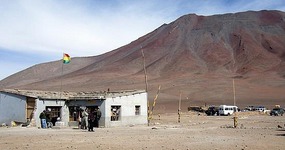
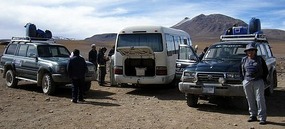
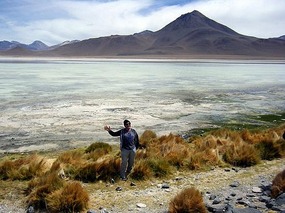
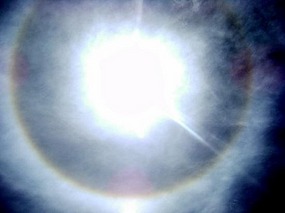
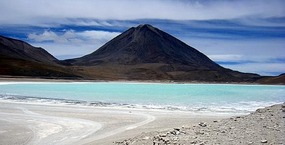
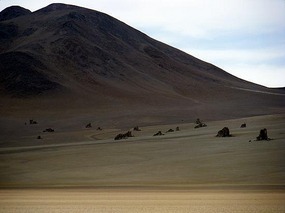
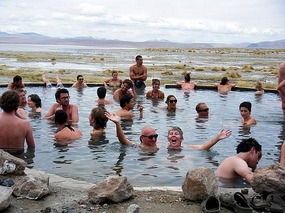
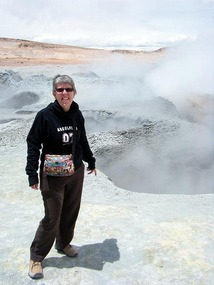
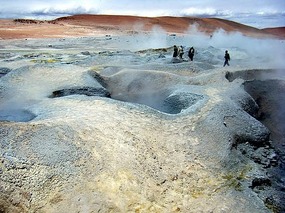
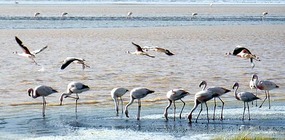
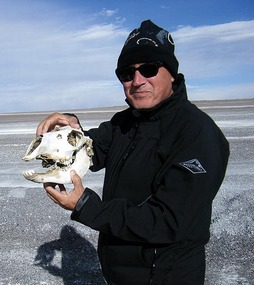
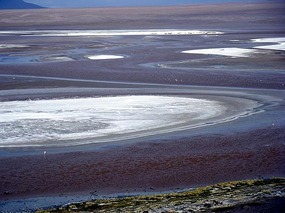
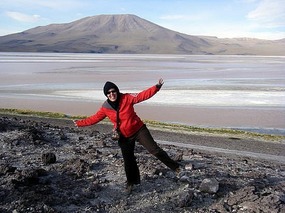
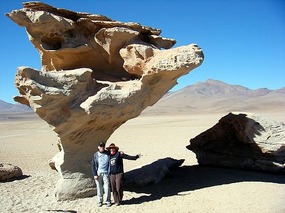
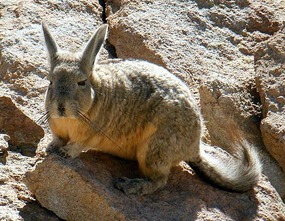
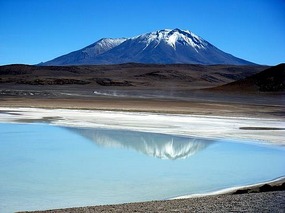
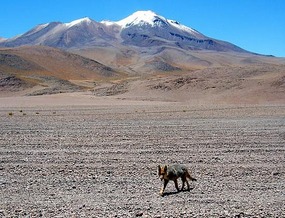
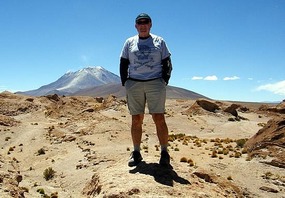
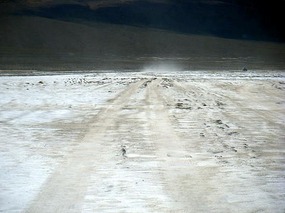
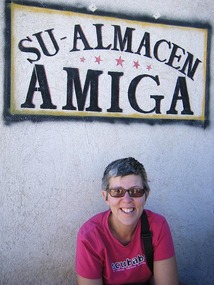
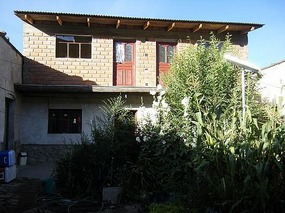
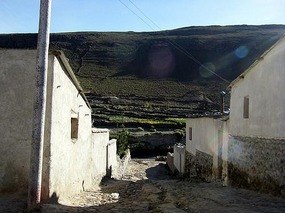
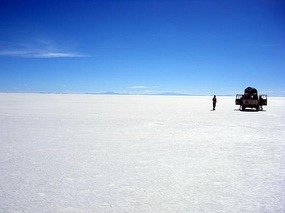
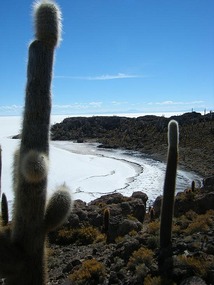
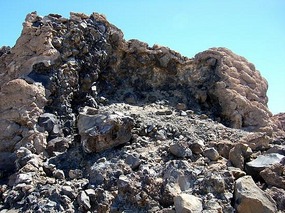
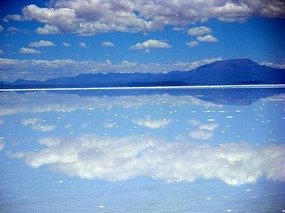
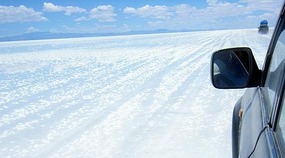
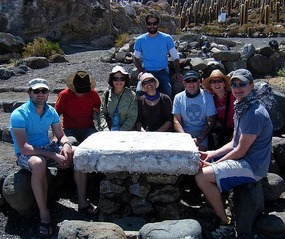
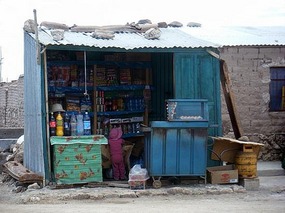
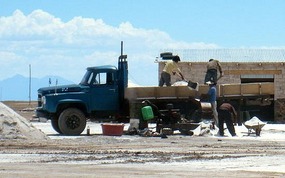
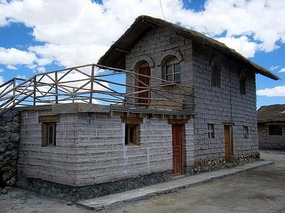





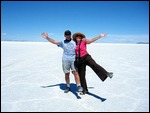

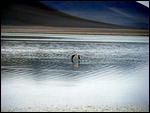
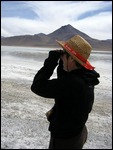
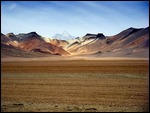
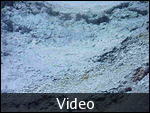
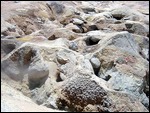
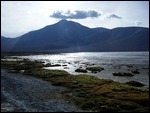

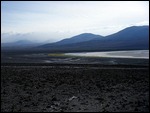
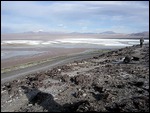

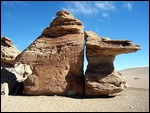

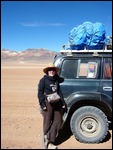
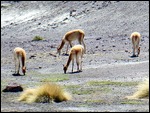



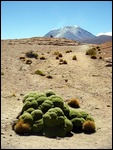

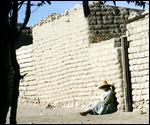
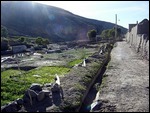
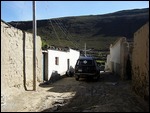
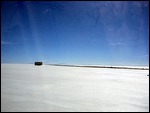
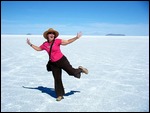
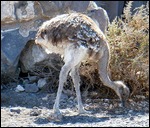
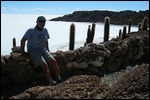
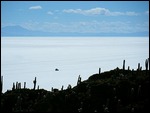

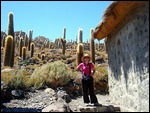
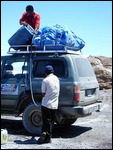
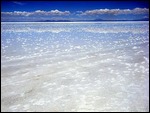
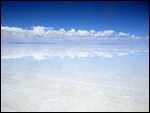

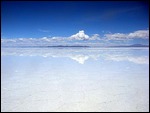
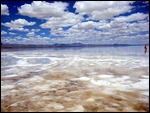

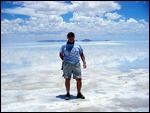
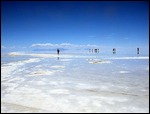
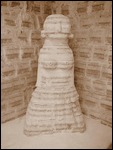
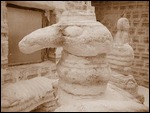
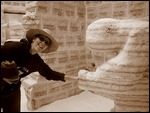
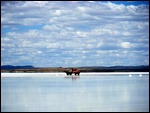
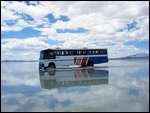
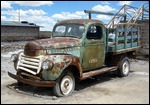


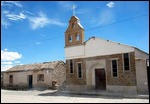
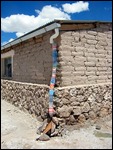
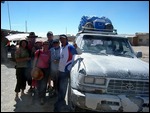
laylapainter
2010-02-15
The salt flats look incredible. I don't know how you managed to get Jen to leave that skull behind it looks like a prime specimen!
jenandtony
2010-02-15
Your dead right! I keep checking her bags ços I'm sure she's hidden it away somewhere. Good job we're not going back to Chile, heaven knows what their customs people would make of it! Tony
grindrodkaz
2010-02-15
loved the salt plains piccies
and we found the coca tea worked
pawongle
2010-02-16
I like it I like it a lot...how amazing the salt water reflections! How cool the skull! How surreal the landscapes!
How boring legal aid.
pawongle
2010-02-16
Oh I forgot...how salty the salt..!